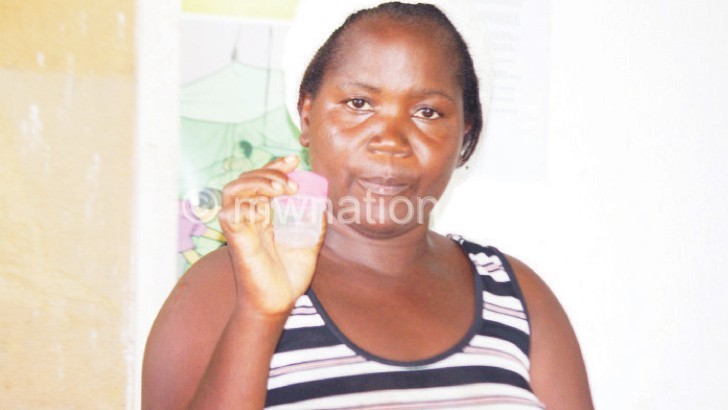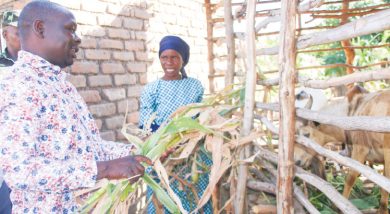Tackling TB closer to home
In Chilembwe Village, tucked deep in sprawling tea fields of Thyolo, Ethel Balani’s group has hit the road running to ensure no one dies of tuberculosis (TB) and HIV. In the country, over half of TB patients live with the virus that causes Aids.
“TB is curable,” she says. “Earlier, TB cases were going undetected and many were not receiving treatment on time. We go to them with information and a checklist of symptoms to save lives.”
Every Wednesday, the volunteers at Namileme Sputum Collection Centre in Traditional Authority (T/A) Nchiramwela go door to door to persuade people to go for screening and treatment without delay.
World Health Organisation(WHO) ranks TB the second highest killer globally, after Aids.
The country had about 17 000 cases in 2015 and 53 percent of them were HIV positive, according to National Tuberculosis Control Programme (NTCP).

Ensuring every person screened for TB undergoes HIV testing—and vice versa—has helped reduce TB death rates to six in every 100 cases.
“We have been at this rate for about six years. Other countries in the region are reporting about 10 percent and this is a big indicator for us,” says NTCP manager James Mpunga.
Community-led initiatives are part of the strategies to further reduce these deaths.
In Thyolo, Development Aid from People to People (Dapp) is working with community groups and health workers to achieve early diagnosis.
“When chiefs call for community rallies, we go there to talk about HIV and TB, especially the importance of early testing and dangers of delays. When people get the message, we give them two bottles in which they cough up—one in the morning and another in the evening.
“They bring the bottles to the sputum collection centre. From there, we send the samples to Thyolo District Hospital, almost 15 kilometres away, for testing. If some are found positive, we go to them and tell the owner to go for instant treatment at the district.”
On Thursdays, Balani’s group dispatches a cooler box containing 10 to 20 samples.
“Nowadays, those with TB signs and symptoms no longer die without knowing their status. They get the results two to four days,” says Namileme secretary Gracious Makonda.
In this way, the community-based change agents are speeding up the detection and treatment of the disease.
Rodgers Chisoni, who survived TB in 2004, says it is incredible the results come so fast.
“Then, I had been sickly for almost five years when I was diagnosed with TB at Thyolo District Hospital. I started treatment late. A doctor tested me after wrong dosages,” he recalls.
Chisoni, 50, is living with HIV. His wife succumbed to TB in 1999.
“My wife would have been alive today if communities had information and skills to fast-track the detection and treatment of TB,” he says.
Chisoni is a beacon of hope among people living with TB and HIV in Nchiramwela. The father-of-six travels from village to village, giving pep talk to support groups in which people living with HIV explore solutions to their shared challenges.
“Many people on antiretroviral therapy [ART] are also taking TB drugs. People living with HIV are particularly vulnerable to TB germs which take advantage of our weak immunity,” he says.
The door-to-door initiative is part of the global race to end the Aids epidemic by ensuring that by 2020, at least 90 percent of all people living with HIV know their status, 90 percent of those found positive receive sustained ART and 90 percent of those on treatment have undetectable viral load.
Such is the knowledge in the rural setting community health worker Janet Muyaya serves.
“When we go door to door with volunteers, we offer clients information about HIV and TB. Many are familiar with the two diseases and they demand life-saving services, including HIV testing, which we offer on the move” she says.
According to Dapp project leader Frank Pachanya, there are 75 sputum collection centres, 750 volunteers and 24 community health workers in all 14 T/As in Thyolo.
He says: “The door-to-door initiative has helped the district hospital to extend HTC and TB screening to hard-to-reach areas.
“We set out to reach 142 000, but the door-to-door initiative has reached almost 172 000 people since the project funded by TB Alert and Comic Relief started in 2015. This is commendable, isn’t it?”
Last year, Dapp equipped Thyolo District Hospital and five constrained health centres with microscopes to improve TB testing.
Expert Kennedy joined Mikolongwe Health Centre as a surveillance health assistant in 2007, but underwent further training in microscopy two years ago. Since January last year, he has handled 245 suspected TB cases and 13 tested positive, records show.
“Before the microscope arrived in January 2017, we used to send smear slides to Chingadzi Health Centre, over 10km away. Due to long distances and competing workloads, results used to come after a week or two. Currently, we do everything under one roof and get the results the same day,” he says.
For Balani, this is good news.
She says: “When results take long, you leave clients guessing whether they are positive or not. These uncertainties are preventable.” n





